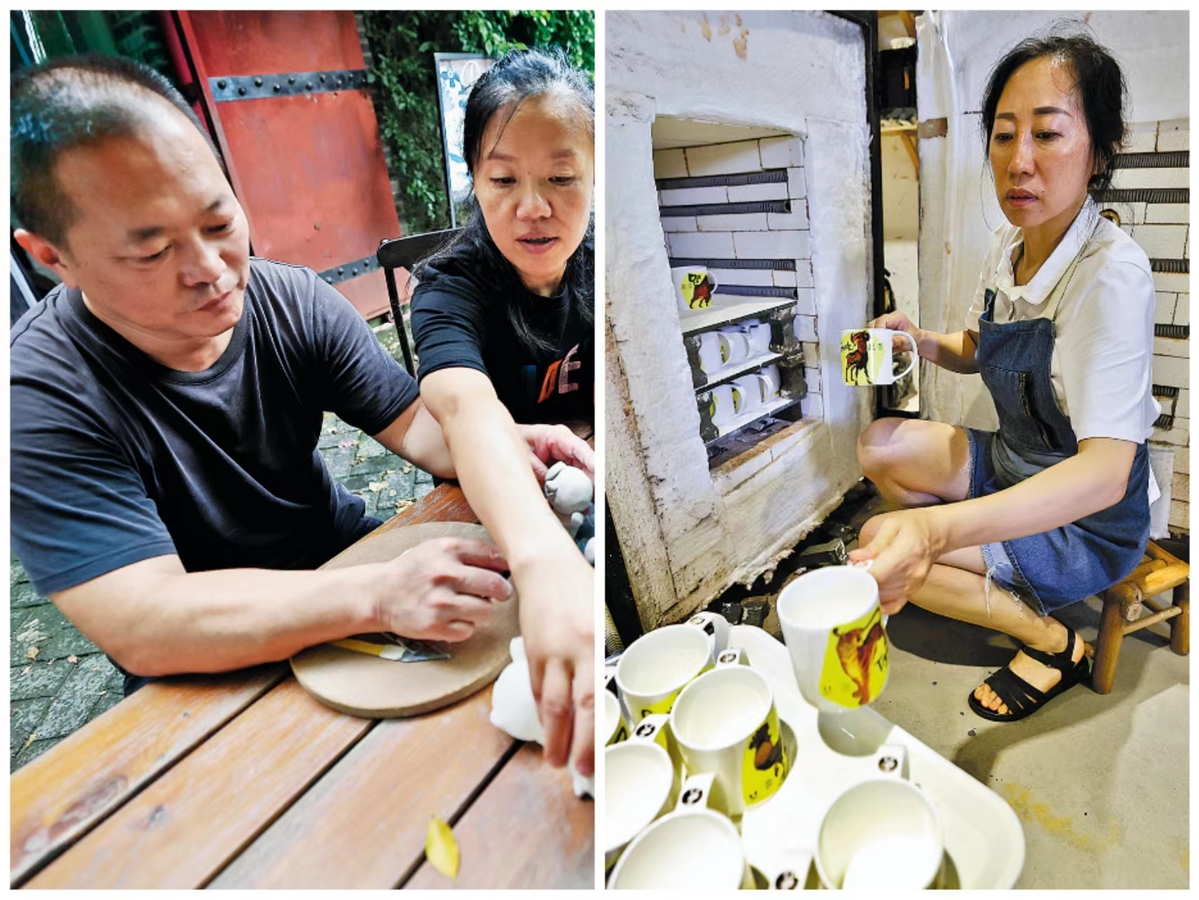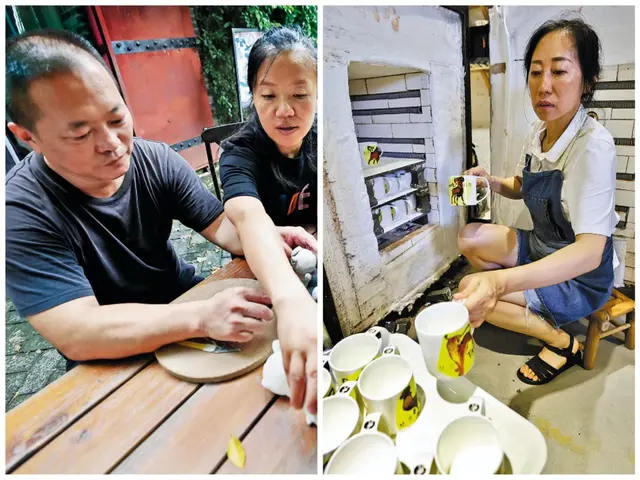With the Chengdu FISU World University Games in full swing, the demand for mascots and creative products has skyrocketed. Among the wide array of Rongbao merchandise — the official mascot of the games — one stands out for captivating the hearts of residents and visitors alike: an exquisitely crafted ceramic version.

Craftsmen make merchandise for Rongbao, the official mascot of the Chengdu FISU World University Games, as well as other cultural products related to the games, earlier this month. WEI XIAOHAO/CHINA DAILY
Each ceramic Rongbao is unique, adorned with meticulously hand-painted red and black gradient effects on its signature flame-shaped ears, eyes and tail. The piece undergoes three firings, which take 15 days to complete.
Behind the cute ceramic panda lies a design team of four artists from Chengdu, capital of Sichuan province.
"We may be a small team compared to the large companies involved in producing games souvenirs, but our focus on product design sets us apart," says Dai Hongyi, one of the designers and a juci (ceramic-mending) artist.
The demand for ceramic Rongbaos has been overwhelming, and most of them are sold out online and in stores. Dai and her team are currently busy packaging orders at their studio, as the last batch undergoes the final firing process.
"Ceramics possess the remarkable ability to withstand the test of time without losing their luster, and serve as a reminder of the charm of the 'slowness' of days gone by, even in today's modern, fast-paced society," Dai said.
She thinks ceramics are one of China's most distinctive traditional materials, and as a representation of Chinese ceramic craftsmanship, the ceramic Rongbao is highly collectible.
"So, among the themed products for the games, the ceramic Rongbao has consistently been popular," she said.
According to Tao Wen, the team's designer and ceramist, the design process took several months and dozens of trials to finalize.
After receiving the Rongbao image, they turned it into a three-dimensional figure using 3D design techniques.
"Once the design was conceptualized, we molded the clay into the shape we'd envisioned. This step allowed us to closely examine and discuss the prototype, and to make any necessary adjustments and refinements until we achieved the desired final form," she said.
As a souvenir of the Chengdu games, the ceramic figurines had to be ready in advance of the event, but the nature of ceramics demands a patient and detail-oriented approach, making it a time-consuming process. It was a challenge for the design team to find a way to balance the two aspects.
Tao recalled that during the initial sampling process, they experimented with a plethora of designs, including three-dimensional Rongbao-shaped plates and Rongbao figurines in various poses; standing, sitting and even lying down.
However, considering factors like the risk of damage during transportation, they settled on the current design.
Tao says that each batch of ceramics takes half a month of meticulous preparation as the intricate firing process is complex and requires skillful handling.
"Temperature, glaze and material are all interdependent factors, and every detail plays a crucial role in shaping the final outcome of the finished product," she explained.
The team also designed a Rongbao tea canister and two series of mugs — the Chinese zodiac and a constellation series — for the Chengdu games.
The canister, which is shaped like a chubby giant panda, was inspired by a photo of a lone panda sitting in the corner. It is painted in three colors — white, black and gold.
The mugs are decorated with illustrations by renowned local illustrator Wu Qingsong, winner of the China Animation and Comic Competition Golden Dragon Award.
"Wu has garnered acclaim beyond Chengdu, and his artwork for the constellation series uniquely interprets Western zodiac culture through the lens of traditional Chinese heroes," Tao said.
"As the games officially commence, Chengdu will welcome visitors from around the world, and we hope these culturally fused art pieces will play a significant role in promoting traditional Chinese culture to international tourists," she said.
Dai and Tao founded their studio in Chengdu in 2016, quitting design jobs to devote themselves to the handicraft world.
The studio is Chengdu's pioneering ceramic art creative design center, seamlessly combining traditional juci techniques with pottery production resulting in innovative designs and creations.
Apart from enjoying juci artworks, visitors to the studio can also enjoy hands-on experiences like pottery throwing, slab building and underglaze painting.
"For years, I was sitting in front of a computer feeling bored. Now, even though I may be physically tired at the end of each day, I am fulfilled, especially when I repair a broken ceramic piece. It brings me joy and a sense of accomplishment," Dai said.
In October 2018, the team's ceramic products were exhibited at the intangible cultural heritage exhibition at the Louvre Museum in France.
Now, as the global sports event unfolds right in their own backyard, the team is once again showcasing their remarkable creations.
"We make each ceramic Rongbao by hand, embodying heartfelt blessings for the Chengdu games. It's something that emanates from the creativity of local artists," Dai says.
She says that as seasoned Chengdu craftsmen, the team takes immense pride in contributing to their home city in this unique way.
(CHINADAILY)
 简体中文
简体中文

